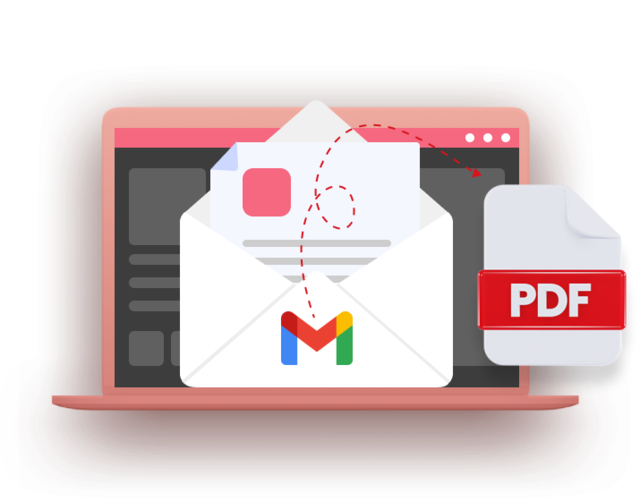In our digital age email has become an essential element of communication. Gmail stands out as one of the most widely used platforms. But managing and organizing your email can be a challenge. It is convenient to be able to send and save emails in PDF format.

Why save emails as PDF files?
Before we dive into the process, we need to understand the significance of saving emails to PDF. Portable Document Format (PDF) is a standard format that can be used on a variety of devices. When you convert your emails into PDF, it produces a snapshot that maintains the original formatting and structure of your email. This will not only guarantee the preservation of crucial information but also facilitates easy sharing and use.
How do you save an email as a PDF file in Gmail
1. Open the Email Login to your Gmail account. Go to the email you would like to save as PDF.
2. Click on the Print icon and locate the icon for printing (usually depicted by a printer) within the email window. Click on it to open the dialog box for printing.
3. Select “Save as PDF” in the field for Destination: Select “Save As PDF” from the list of available printers.
4. Change Settings (Optional) Before saving, you can alter settings such as layout the size of your paper, as well as orientation to suit your needs.
5. Click Save Then click the “Save” button to select the destination directory on your computer. You can then save the email as a PDF.
Save Email to PDF – Your Ultimate Guide to Seamless Conversion
We’ve already gone over the essentials, but let’s examine some additional suggestions to enhance your experience when saving emails to pdf in Gmail.
Create folders to organize your documents. To keep a systematic procedure in place, you can create folders that are specifically devoted to various categories. For example, folders could be made for emails related to work, personal correspondence, and even specific projects. These folders make it easy to locate emails by saving them as PDFs.
Gmail’s batch printing option allows you to choose multiple emails to print in one go. This can be useful when you want to archive whole discussions or project threads.
Name conventions: Use a consistent name for all of your PDFs. Include information such as the sender’s name, the date or subject in order to locate particular PDFs.
Password protection: To boost security, password protect sensitive PDFs. This ensures only authorized persons have access the PDF, thereby providing an extra layer of protection.
Cloud Storage Integration: Consider the possibility of integrating your Gmail account with cloud storage services. Thus, you are able to save your email messages to Google Drive or other platforms as PDFs, allowing them to be accessed from anywhere.
The conclusion of the article is:
In conclusion, the ability to save emails as PDF in Gmail is a valuable skill that enhances your email management and organizational capabilities. It doesn’t matter if you’re saving important messages, creating a reference library, or sharing information with colleagues, converting emails to PDF offers an array of options.
The process of mastering it will improve your workflow, but it will also help you be more efficient and organized. As you explore the vast expanse of your email messages, utilize the power of PDF to preserve the content, share it with friends, and refer back to your emails with ease. Keep your emails in a PDF file and experience an improved Gmail experience.
